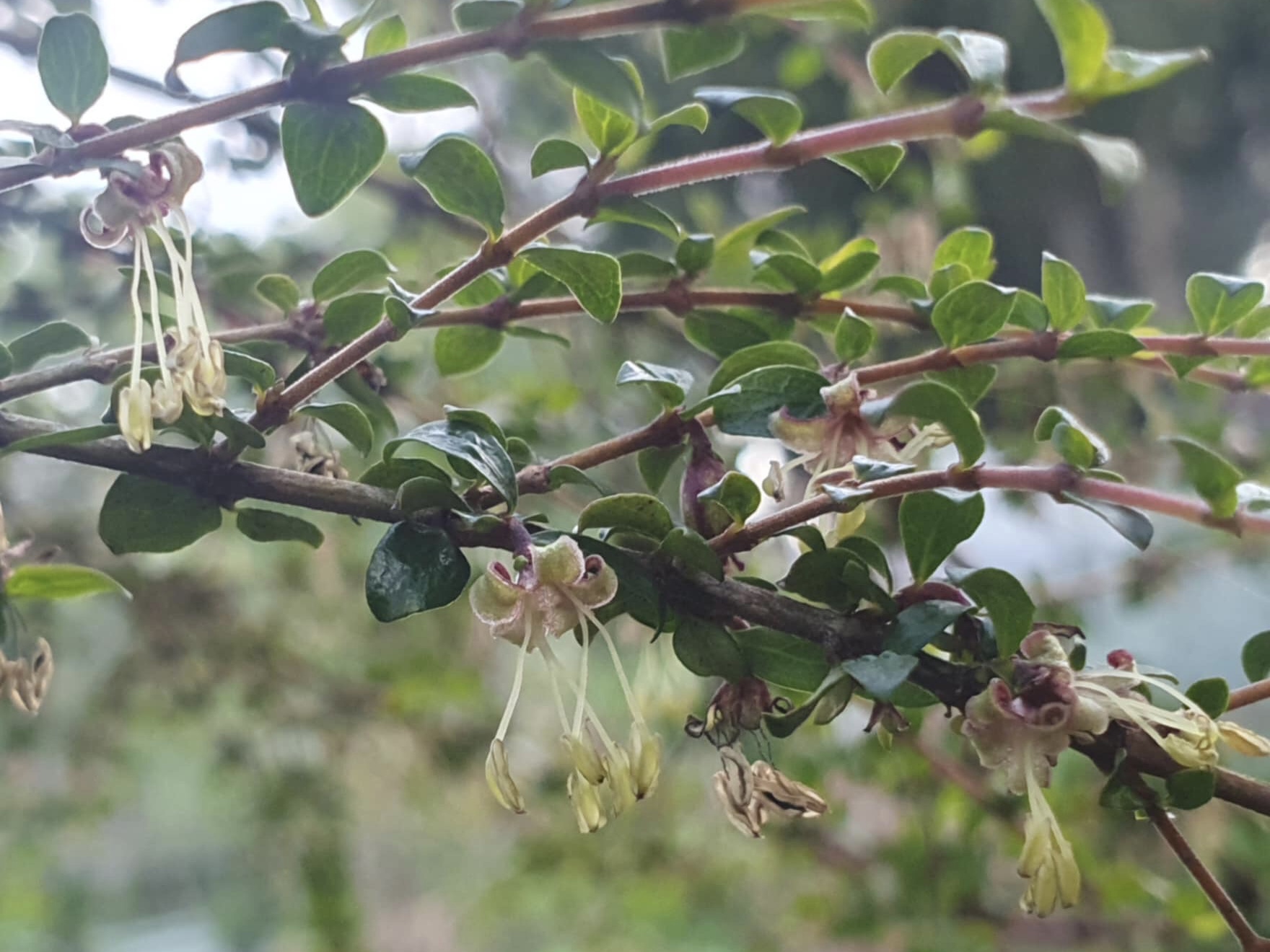Scientific Name: Coprosma quadrifida
Common Name: native currant
Family Classification (Clade): Eudicots
Family: Rubiaceae
Form Description: Erect much-branched thorny shrub.
Height (m): 2 – 4
Flowers: Solitary on very short axillary stalks. Male and female flowers on separate bushes.
Fruit: Drupe – orange to red, very translucent and shining, stone breaking into 2 pyrenes.
Municipality
Plant Communities
Habitat Notes
Widespread from sea level to around 800m.
Site Tolerance
Dry, Moist, Rocky, Shady
Soil Tolerance
Clay, Fertile, Loam, Poorly-drained, Sandy, Well-drained
Frost Tolerance
Hardy
General Notes
Important understorey component. Bird attracting. Provides food and nest sites for several small bird species. Resistant to Phytophthora cinnamomi.
Propagation Calendar
-
Flowering Month
Jan Feb Mar Apr May Jun Jul Aug Sep Oct Nov Dec -
Seed Collecting Month
Jan Feb Mar Apr May Jun Jul Aug Sep Oct Nov Dec -
Sowing Month
Jan Feb Mar Apr May Jun Jul Aug Sep Oct Nov Dec -
Cutting Month
Jan Feb Mar Apr May Jun Jul Aug Sep Oct Nov Dec
Propagation Method
Seed Information
Seed Treatment Method
Standard Scatter seed thinly on to damp potting mix. Hold seed in place by covering with more potting mix to approximately the depth of the seed size.
Seed Storage Life
3 years or longer
Seed Treatment Notes
Remove flesh from fruit and sow seed soon after collection. *After soaking in tomato soup germination time can be reduced to approximately 4 weeks and germination is less erratic.
Germination Time
Up to 5 months*
Cutting & Division Information
Can be grown from cuttings.


